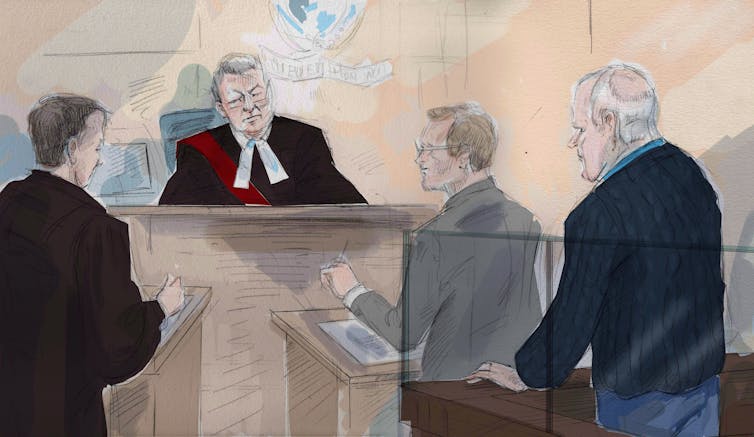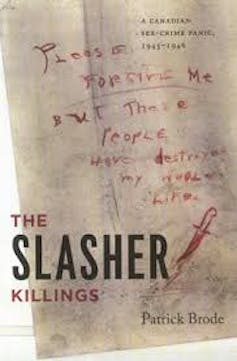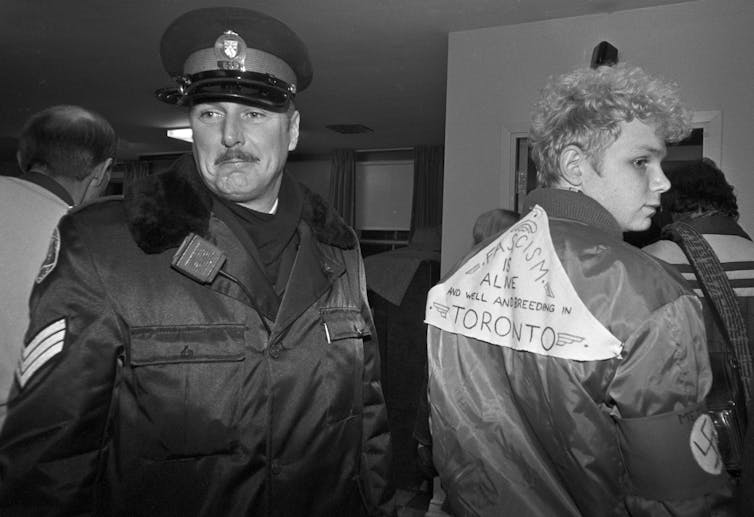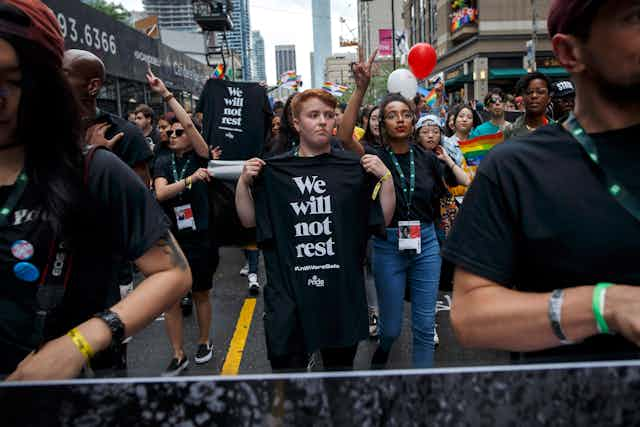Bruce McArthur, who allegedly lured men into sexual encounters, killed them and disposed of their bodies, faces eight murder charges in Toronto. The case has saddened and angered many, especially those from LGBTQ2S+ communities. They’ve accused police of failing to investigate the case seriously.
Some community activists believe homophobia and racism lengthened the time it took police to make an arrest. These accusations have triggered an investigation into previously unsolved murders of gay men in the 1970s.
The Canadian federal government has also announced a $450,000 grant to help Pride Toronto develop strategies to help LGBTQ2S+ communities in Canada live more securely.
McArthur’s alleged crimes might have been solved more quickly had the victims not been homosexuals or racialized men. However, if we take a longer historical view of sexual violence perpetrated against marginalized victims, the McArthur investigation looks considerably more effective.

History of serial killers
Serial killings are not a recent phenomenon. Prior to fingerprinting and human blood typing in the early 20th century, it was difficult for investigators to obtain the incriminating evidence to lay multiple homicide charges. In the late 1880s, London’s Metropolitan Police identified five savage murders of “fallen women” as the work of one man, believed to be “Jack the Ripper.” But police never caught the culprit.
Six decades after those London murders, police in Windsor, Ont., cracked Canada’s first serial sex murder case involving gay male victims.
In 1944, Windsor recorded no murders. Then, a series of vicious knife assaults in the city left two men dead and three severely wounded. The mysterious “Slasher” alarmed the public and perplexed the police, as author Patrick Brode observed in his book, The Slasher Killings.
Unlike the recent disappearance of men from downtown Toronto’s “Gay Village,” a neighbourhood marked with rainbow street signs, the men were attacked along Windsor’s dimly lit waterfront. In the post-war border town, subcultural communication, not street signs, turned the zone into a place where men met to have sex.
Until 1969, homosexual sex was illegal in Canada and commonly defined as perverted and deviant. Psychiatrists subjected gay men to aversion therapy, castration and lobotomies.

One of the “Slasher’s” victims, who survived a near-fatal stabbing, admitted to police that he had encountered the man while out on a stroll for sex.
Despite the significance of his testimony, Windsor police arrested the man for “gross indecency,” and subjected him to psychiatric testing. When a female informant contacted the police after the first spate of attacks, they ignored her evidence because she was a “suspected lesbian” and therefore a “deviant.”
In 1946, the case was solved only because the attacker left behind his weapon during an attempted murder. A public appeal to identify its owner led to the conviction of 18-year-old Ronald Sears.
A bumpy progress
Two decades later, in the 1970s, homosexual sex was no longer criminal. But homophobia continued to taint the policing of violence against gays. In Toronto, between 1975 and 1978, 14 men who frequented downtown gay bars disappeared and were later discovered dead. Eight of those homicides went unsolved.
However, sexual politics had shifted. In the volatile, exuberant and fearless climate of the gay and women’s liberation movements, homosexuals put the police on notice: they deserved to be served and protected.
In 1978, The Body Politic, a monthly Canadian magazine on gay issues, published a damning article on the skewed priorities of the police. When it came to gay people, Toronto’s force assigned more staff to harass men who cruised for sex than to solve the disappearances and murders of gay men.
The Body Politic reporter Robin Hardy interviewed police detectives and inspectors who said they depended on members of Toronto’s gay communities (approximately 200,000 in the 1970s) to help solve the cases. They commended gay men and women for being “most helpful in coming forward with information.”

The four decades that followed were not years of smooth progress. History never works that way. In the early 1980s, police dragged relations with Toronto’s gay community to a low point after they launched “Operation Soap,” a terrorizing assault on four bathhouses.

Between the 1980s and 2000s, queer communities grew, seeking allies in government. And they built relationships with service organizations, including the police.
When Bill Blair appeared in Toronto’s Pride Day March in 2005, it was the first time a Canadian police chief publicly associated himself with the queer community. On the 35th anniversary of the bathhouse raids, Chief Mark Saunders apologized for the damage done to people from the mass arrests and beatings.
Missing people: Delayed investigations
As early as 2011, Toronto police considered cases of men missing from the Gay Village as possible homicides. A task force, “Project Houston,” began to investigate them, and for 18 months, police attempted to solve the disappearances of Skandaraj Navatram, Abdulbasir Faizi and Majeed Kayhan. Due to a lack of evidence, they shut down the investigation in April 2014.
It took more cases of missing men, and pressure from LGBTQ2S+ lobbyists, before police opened a subsequent task force, “Project Prism,” to look into the disappearance of Andrew Kinsman and Selim Esen. Within seven months of the missing persons report for Kinsman, police arrested McArthur for the murder of both Esen and Kinsman.

If McArthur began to prey on homosexuals in his 20s, the typical age at which serial killers start to commit homicides, was he responsible for the unsolved murders of men in the 1970s, when he worked in downtown Toronto? Police responded to this question by reopening cold case files.
Could the missing persons probes that ultimately turned into murder investigations have been handled more effectively? Police replied by supporting the establishment of an Independent Civilian Review into Missing Persons Investigations. Chief Saunders said: “This review must consider not only investigative processes but also systemic issues of bias.”
Other marginalized communities noted in the review include “South Asian, Middle Eastern, 2-spirited, other racialized individuals, as well as those who are either homeless or work in the sex trade that are particularly vulnerable and require an improved approach to policing relationships.”
By taking a long view of sexual homicide and its investigations, we can see how much as changed, due to forensic science but also shifting politics.
Nevertheless, the Civilian Review will likely expose a problem that makes murders of the sort attributed to McArthur difficult to solve. Homophobia, transphobia, racism and misogyny are forms of fear and hatred that are not exclusive to the police. But this, too, can and must change.

